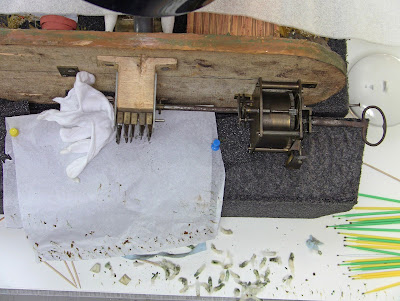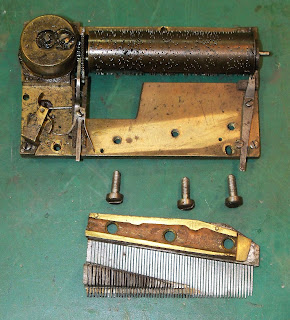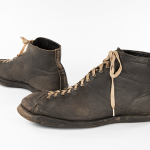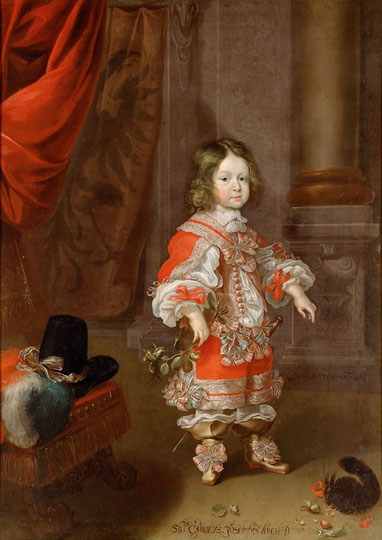In 1986 the BSM acquired at auction an automaton made in the 1880s at the famous Phalibois workshop in Paris, France. It features a monkey cobbler sitting at his workbench under a flowering tree. This artefact was selected for our previous exhibition, Fashion Victims: The Pleasures and Perils of Dress in the 19thCentury, thus providing an excellent opportunity to get the monkey in working order.

There are two separate mechanisms inside the ebonized base: one set of gears, cams and cam riders which make the monkey function when a key is turned; the other component is a music box that plays two tunes by pulling a string. There was one hundred and thirty years of dust and grime stuck to all these moving parts. The wood gears and brass arms to which the cam riders are attached were cleaned in-house. The music box was sent to Jeremie Ryder, an automaton conservator who takes care of the Murtogh D. Guinness Collection of Automatic Musical Instruments and Automata, at the Morris Museum in Morristown, New Jersey.


The vertical brass arms have riders at their mid-point which glide over the cut profile of the wooden cams, making the horizontal wires which pass upward into the monkey’s torso, move the head, the jaw, the eyes and an arm which bangs the hammer on the boot stand.

The mechanism at the top of the photo above shows the steel-pinned, brass cylinder, which as it rotates, plucks the teeth in the musical comb. Those plucked, vibrating teeth, produce the tones for the musical arrangement. Underneath the tooth tips, are found tiny chicken feathers, attached by shellac. They dampen an already vibrating tooth just before being plucked by another cylinder pin, thus reducing undesirable mechanical noises. All these feathers were replaced after the metal components were cleaned, as seen in the next photo.

Watch the monkey cobbler at work:



